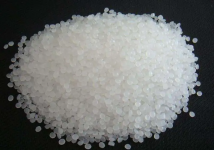read: 574 time:2025-06-15 02:13:19 from:化易天下
Why is Formic Acid Stronger Than Acetic Acid? An In-Depth Analysis
In the realm of organic chemistry, understanding the relative strengths of acids is crucial for predicting reaction outcomes and optimizing industrial processes. One frequently asked question is: "Why is formic acid stronger than acetic acid?" This article delves into the molecular intricacies that explain this phenomenon, offering a comprehensive analysis.
Before diving into the comparison between formic acid and acetic acid, it’s essential to grasp what "acid strength" means. Acid strength refers to the acid's ability to donate a proton (H⁺) in aqueous solution. The strength is often quantified by the acid dissociation constant (Ka) or, inversely, by the pKa value—the lower the pKa, the stronger the acid.
Formic acid (HCOOH) and acetic acid (CH₃COOH) are both carboxylic acids, meaning they contain the -COOH functional group. However, their molecular structures differ in a critical way: formic acid has a hydrogen atom attached to the carbonyl group (HCO-), while acetic acid has a methyl group (CH₃CO-) in the same position.
This difference in structure is the key to understanding why formic acid is stronger than acetic acid. The electron-donating nature of the methyl group in acetic acid plays a significant role in this disparity.
The methyl group (-CH₃) in acetic acid is an electron-donating group through its inductive effect. When acetic acid dissociates in water, it loses a proton (H⁺) to form an acetate ion (CH₃COO⁻). The electron-donating nature of the methyl group stabilizes the negative charge on the oxygen atom less effectively. This stabilization reduces the molecule’s tendency to donate a proton, making acetic acid a weaker acid compared to formic acid.
On the other hand, formic acid does not have an electron-donating group attached to the carboxyl group. The absence of a substituent like the methyl group means that the negative charge on the resulting formate ion (HCOO⁻) is less stabilized by inductive effects. This relatively unstable state of the formate ion means that formic acid is more eager to lose its proton, thereby increasing its acid strength.
Another factor that contributes to the strength of formic acid compared to acetic acid is the resonance stabilization of the conjugate base. Both formate (HCOO⁻) and acetate (CH₃COO⁻) ions can be stabilized by resonance, where the negative charge is delocalized between two oxygen atoms.
However, in acetic acid, the electron-donating methyl group somewhat disrupts this resonance by pushing electron density toward the carbonyl group, thus reducing the overall resonance stabilization. Formic acid, with no such group, allows for more effective resonance stabilization of the formate ion, making it a stronger acid.
In summary, the question "Why is formic acid stronger than acetic acid?" can be answered by examining the molecular structure and the electronic effects of the substituents attached to the carboxyl group. Formic acid lacks the electron-donating methyl group present in acetic acid, which leads to greater acid strength due to less stabilization of the conjugate base and more effective resonance stabilization. Understanding these subtle yet significant differences is crucial for chemists and chemical engineers working with organic acids in various industrial applications.

Jincheng Petrochemical's 300000 ton polypropylene plant successfully trial production, 2024 polypropylene market analysis

The ABS market remains sluggish, what is the future direction?

Market differentiation of bisphenol A intensifies: prices rise in East China, while prices generally decline in other regions

The production method and process flow of silicone acrylic lotion, and what are the common raw materials